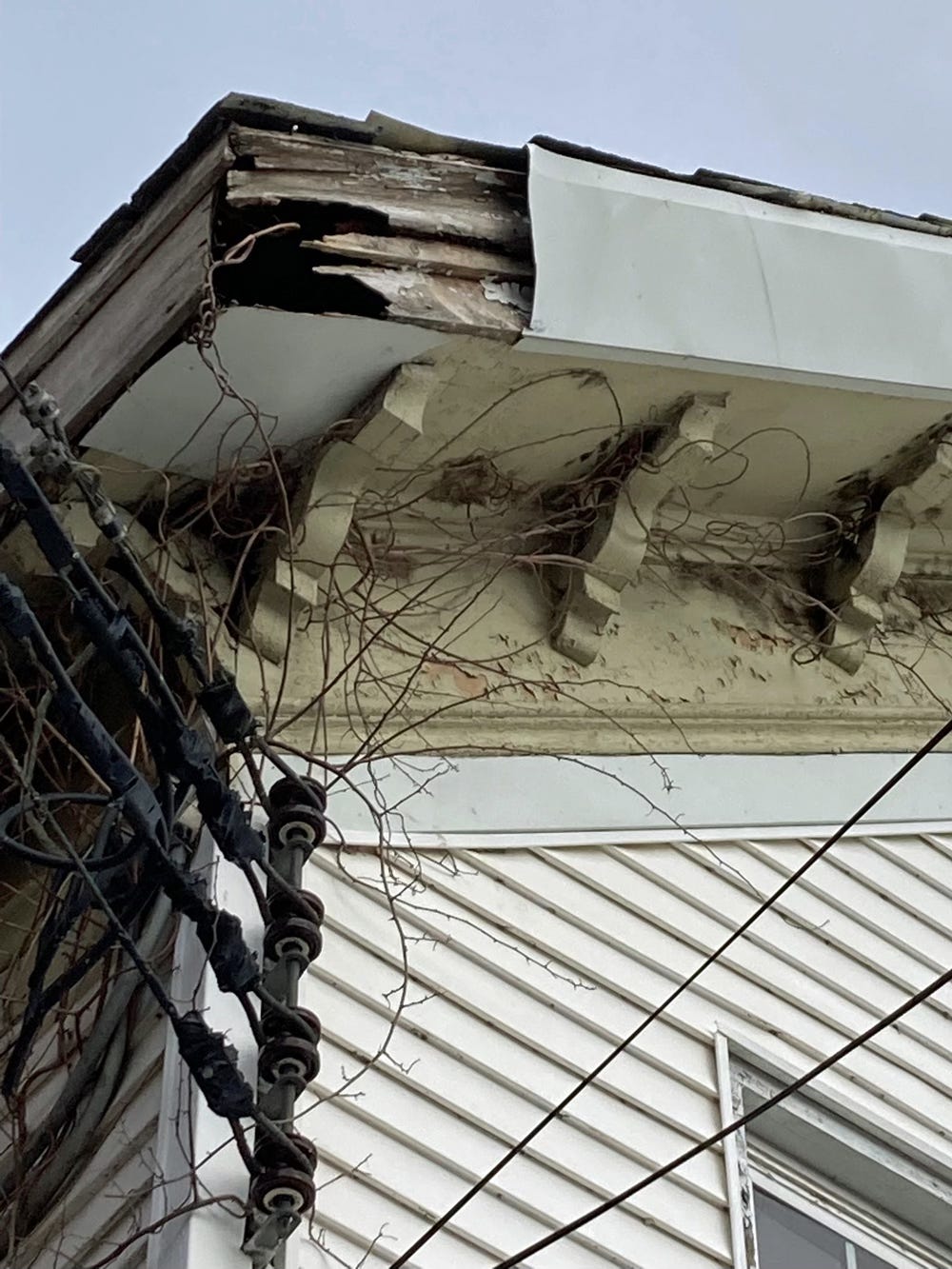March 2022 | Eyesore
Commentary on architectural blunders in monthly serial.
After many months of the macro, let’s step down to the micro. Behold the many layers of renovation of an ancient (by US standards) house on Main Street. See the original corbel that braces the fragment of pediment above the door. It was but one small grace-note among what were many grace-notes in this humble vernacular building when it was built (1850 -1870, I’m guessing). Grace-notes endow a building with the reminder that humans, at our best, deserve to be loved. They convey the message that the building was built lovingly, with care for its details, which derive from the grand spectacle of life on earth. Nature, that is. The humble corbel did not have to be curved — but somebody cared enough to do it that way. It took some skill to, at least, design and proportion it, even if it was fabricated by machines at a millworks.
It appears that the building has been given at least two 20th century exterior renovations — “skin jobs” — first with aluminum siding slapped over the original wood, and secondarily with vinyl some time after that. These materials are always marketed as “maintenance-free!” It’s a lie of course. Houses still require care, but these materials actually repel the instinct to care for them. They are without grace and they invite neglect. Of course they age badly, and as they do, they defeat our instinct to love the things that our town is made of and care for them.
Below, note the condition of the eaves. The renovators saw some value in saving the brackets, plus the original wood of the soffit and the frieze board. But see how violently the corner of the building was assaulted by industrial progress — as if technology had gone to war against beauty — and how nature (a trumpet vine, I think) fought back against that insult.






